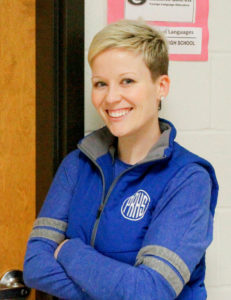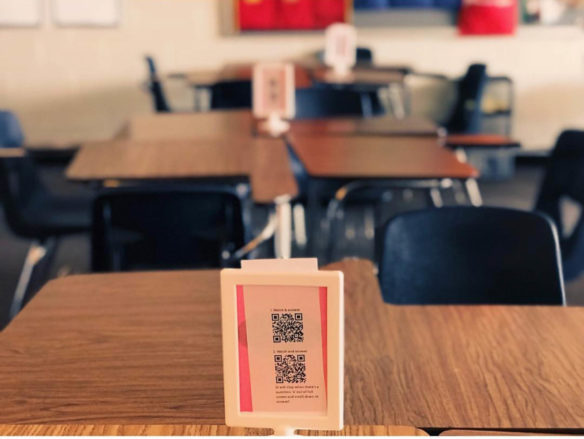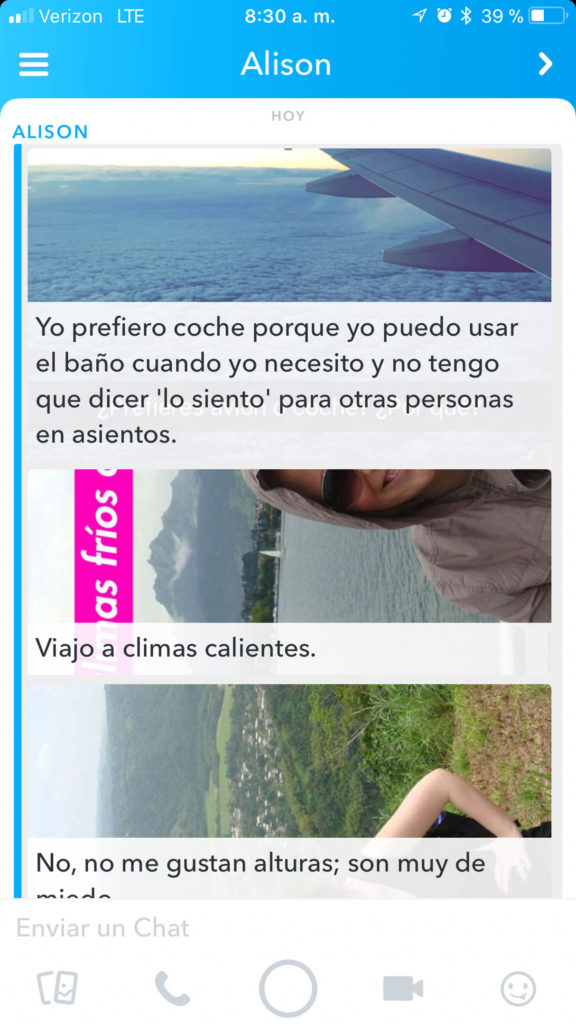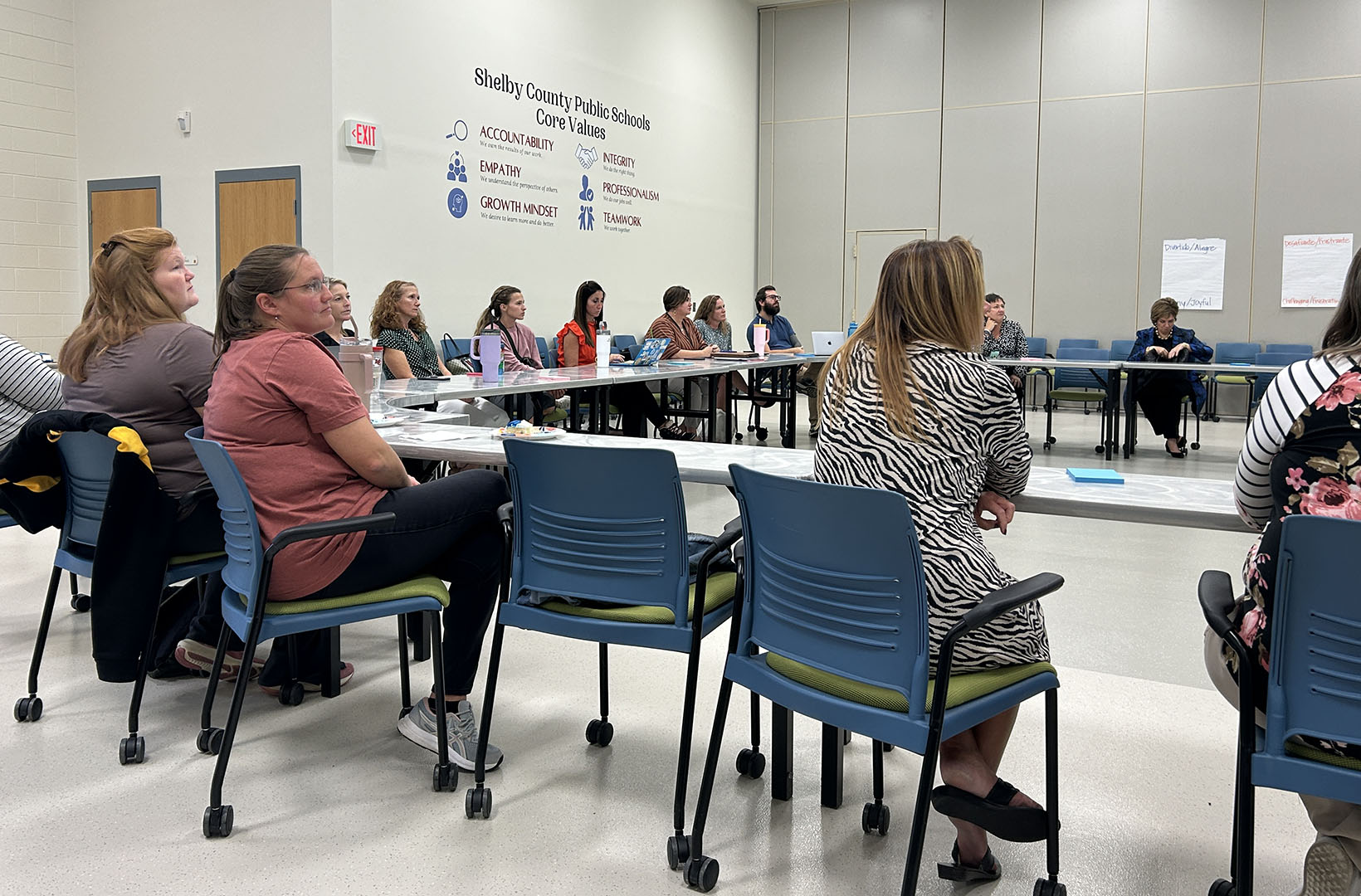This article is the fourth in a series of four articles that highlight (and “hack”) the American Council on the Teaching Foreign Languages’ (ACTFL) six core practices in the context of actual classrooms. These Core Practice Hacks are meant to guide both planning and instruction. In each will be ideas, examples and reflection points for us, as teachers, to get R.E.A.L. about what’s going on in our classrooms. R.E.A.L. stands for the process of reflect, energize, assess and lead.
Read the series:
- Core practice hacks: Let’s get R.E.A.L.
- Core practice hacks: Planning, assessment and feedback
- Core practice hacks: Tips and tools for engaging students

Meredith White
Every day, conversations start and/or end with my students with, “But for real.”
“You need to get working, c’mon, for real,” I’ll say as they stall starting an activity. Or I may say, “But for real, guys, be careful what pictures you’re taking on your phone and what you’re recording; the consequences can be really harsh.” Whether it’s softly peppered in daily advice or used to transition into buckling down, “But, for real” communicates, “Hey, I hear you, but there’s this other piece you need to consider.”
When mentoring, observing department mates or collaborating, we can cross the threshold to uncomfortable conversations with a gentle, “I cannot believe that student said that. But, for real, let’s talk about what you’re going to do next time and how your classroom management plays a part.”
In working to “get R.E.A.L.” with ourselves, we cannot successfully execute each component without first saying, “But, for R.E.A.L.” We need to be planning for and planning on Reflecting, Energizing, Assessing and Leading. It starts with taking an honest look at our classroom environment, interactions with students, biases, priorities, curriculum preferences and most honestly, our own experiences learning the same content.
Because language acquisition and use is an emotional, personal, performance-based process, the last three core practices tend to be hot button topics for many involved. How we teach grammar, how we find authentic resources and how we provide feedback bring out strong beliefs.
Below are our last three core practices and my favorite hacks for classroom use.
Core practice: Teach grammar as a concept and use it in context
Learning grammar is never the same experience for everybody.
For me, grammar presents no problem. I am a word nerd and always have been, I’ve loved it as far back as my memory takes me.
However, my students are not me and they may not be as excited as I am when I work with words. They have a different level of enthusiasm (and experience) toward acquiring a second language. As a language educator, I must remember that. Some of our students will be like us, and we can differentiate for them, no problem. But, for real: most of our students do not have our same motivations.
Grammar, therefore, doesn’t typically serve well as the hook for the lesson. Students must be engaged with function before form.
I try not to walk into a furniture store looking for something beige (form). Rather, I am looking for a new sofa (function), preferably leather for easy cleaning (function). Doing the reverse would result in some disjointed purchasing, the same way that front-loading grammar and following with content and context can feel fragmented to students.
I like to use stories and current events to hook students. My first story starts the second day of class and it’s called “Parker y las chicas,” – or “Parker and the Girls.” Parker is a boy who gets rejected by three girls every time he introduces himself to them. Instead of their names, they say, “Oh, hi, my name is GO AWAY!” Students laugh, it’s engaging and eventually we plot twist a little bit and use Parker throughout other units, too.
Notice I didn’t have to teach greetings as, “Hi my name is ___.” It was input via a story, already in context and accessible. Then I pause after a read-through and say, “So, how do I say, ‘My name is?’” And because I don’t know their names yet, I introduce myself to a few students as examples and work to remember their names while modeling. A little while later, you can repeat the exact thing verbatim and introduce yourself to a few other students quickly. There is your grammar lesson, in context.
A similar feigned improvisation with pop-up grammar can even be done in greater detail. My high-flying students want the conjugations, I give them lots of resources individually that I wouldn’t necessarily use as a lesson in a group setting and it works.
The same can be said for authentic resources and social media in the world language classroom. If it’s a headline that you think merits attention or would be a great hook, use it. Scaffold with what they need to understand it, and then follow up with putting the structure you wanted them to see into use in another way.
If a headline saying “[Celebrity name] [is going to] [verb] [because] …” stands out, I would use it to highlight “is going to + infinitive” (in Spanish). Input, discuss, verify student comprehension, then put it in another context that applies to them. “Quick, take three minutes and jot down three things that you are going to do today,” and so on.

Inexpensive frames can be set up for students each day to provide codes to authentic resources for increased contextualized language exposure.
Submitted photo by Meredith White
Core practice: Using authentic texts and resources
It can be hard to wrap our brains around finding and using authentic resources – like a news headline – especially when teaching novice levels. Start small: Instead of going over an entire song, start with the chorus. Integrate a music video or a commercial into your anticipatory set routine via QR codes, then follow up with another activity or even a quick exit ticket.
However authentic resources are ingrained, start small. In the novice levels, students will crave more and seek out more when provided – they just don’t know where to start. It’s our job to get to know them and then leverage our resources accordingly to deliver and integrate meaningful, interesting content. Not much makes a struggling student smile brighter than when we follow up a conversation about his or her favorite _____ with something we saw on [authentic resource] and a, “Hey, I saw this Lebron James piece on the NYT en español thought of you, [hands it to student] let me know what you think!”

Class social media accounts can be used to post questions for students to answer that the teacher can then respond to and use to gauge comprehension.
Submitted photo by Meredith White
Core practice: Provide feedback to improve learner performance
Here’s a deep, dark secret I wish I had known earlier in my career: that conversation about Lebron can lead to and enhance feedback. Following up with a, “Hey, what did you think?” leads to what a student understood and what they didn’t. That’s feedback.
Feedback of this sort might then be, “Oh, OK, so ___ means ___,” and jotting that down for them in the margin or spelling it out loud so they can as you stand there. They’ve now annotated something customized for them in an instant on a text that was already of interest. The resource, the initiative taken by the teacher, has now upcycled itself into an intentional, teachable moment.
If someone had told me 10 years ago that feedback could be verbal, I would have hugged them on the spot. I thought that feedback needed to be laboriously written, with every accent and spelling confusion marked, over a period of hours. Sometimes, yes. Many times, no. But, for real: with 36 students in a class, one must get creative with feedback.
Flipgrid is a great go-to for students to reflect on how they did on an assignment, how they feel they’re doing during a unit, what they find difficult, what they feel comfortable with and how they’re doing in general. Flipgrid is a simple way to solicit feedback from students regularly, and then you can log in at your convenience and respond. Because you can respond via video, the feedback is also as personal as the student’s response.
When there are marks, however, it’s important to be purposeful. I prefer templated/standardized stamps to start off my feedback, and then customize additions and notes from there. With stamps that make it easy to mark a student’s proficiency level and “my favorite part” stamps, I can quickly highlight the level of the student’s writing performance, as well as the most enjoyable part where he or she took a risk, used level-up language and injected his or her personality. Instead of merely marking what’s lacking, it highlights what enhances the work; positive framing by default.
I also like to regularly utilize stations. I like to make one of the stations a feedback and check-in opportunity. I have nine groups of four students in my classroom, so I create eight stations and the ninth is a group sitting with me at my laptop so we can do a one-on-one run-through of assessments and next steps, a couple of minutes per student. Students can ask questions about recent grades, where they are in terms of proficiency and what they can do to “level-up” in proficiency. The time is prioritized and built into class so that I get to talk intentionally with each student.
Lastly, regardless of the resources or online platforms your school or district offers, a simple way to keep some of these conversations going is by e-mail or a shared document. I keep a shared a shared document like this one for my students that goes for the entire semester. They can use it to submit work, and I can add vocabulary that might interest them, tips, grammar notes they asked for, writing feedback, notes of encouragement, a sound file from a speaking assessment, and more. It lives in the cloud and is accessible by everyone, including parents, which they love.
If we are planning, teaching, and assessing 1) for real, and 2) for R.E.A.L., we cannot go wrong. Most importantly, we are no longer talking about language at our students, we are using language to communicate with our students on their paths to proficiency and beyond. The Core Practices illuminate said path and these hacks can be the practical segue at the classroom level.
Meredith White teaches Spanish at Peachtree Ridge High School (Gwinnett County Public Schools), in Suwanee, Ga. She is on the Executive Board of the Southern Conference On Language Teaching (SCOLT), and she serves as its program co-director and social media coordinator. In addition, she is a doctoral student, #Langchat moderator, and Path2Proficiency blogger.




Leave A Comment